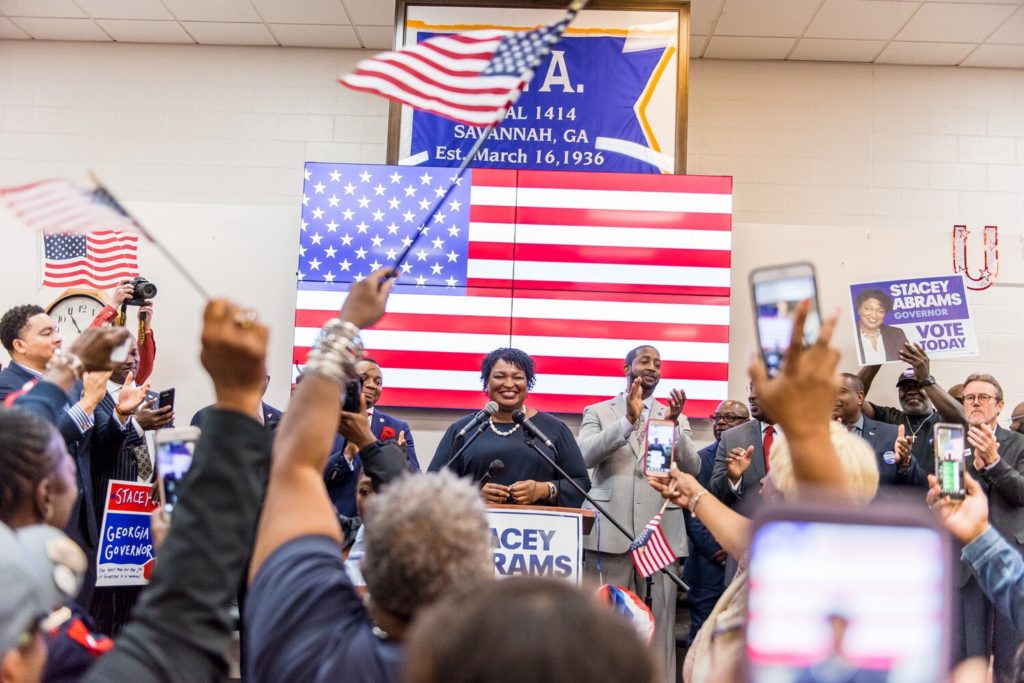
We are living in challenging times—times that require us to do things to help not only ourselves, but also our neighbors. In addition to social distancing to help slow the spread of COVID-19, one of the easiest and best things we can do to strengthen the future for ourselves, our families and our communities right now is fill out the 2020 census form.
Once a decade, the Constitution mandates a count of every person in the United States. That information is then used to determine how billions of federal dollars will be spent over the next 10 years for programs that support nutrition, housing, education and health care for working families.
Every community stands to benefit from an accurate census count—but as the primary caregivers in their families and the primary beneficiaries of many government-funded programs like Medicaid and SNAP, women (and particularly women of color) have an outsized stake in the census.
Women make up more than 50 percent of the population but are at high risk of being undercounted in the census for reasons that underscore how racism and sexism pervade all aspects of our society. Women face systemic gender discrimination in pay and are more likely to experience homelessness and work low-wage jobs, all of which make them harder to count—and these realities are only further compounded for women of color.
The census also has major implications for women’s reproductive health and freedom because funding for federal family planning and maternal health grants is allocated based on census data. From Head Start to CHIP and roads and hospitals, the census is the underpinning of how our communities are funded and protected.
Women have a lot at stake and so much to lose in the 2020 census, making it critical that we work together to ensure an accurate and complete count. Thankfully, women leaders understand these challenges and have stepped up to lead 2020 Census outreach efforts.
Nearly a year ago, Nevada launched a sweeping plan to increase participation in the 2020 census led by Lieutenant Governor Kate Marshall. According to Lieutenant Governor Marshall, the state could lose up to $20,000 in federal funds for every person that is NOT counted.
In Minnesota, Peggy Flanagan—the first Native American woman to serve as the state’s lieutenant governor—is working hard to ensure that her community is counted. The Native American population is also notoriously hard to count and remains the most undercounted racial group leading to less representation in government and less funding for infrastructure, health care and more.
Mayors like Kate Gallego in Phoenix have announced major plans to launch mobile census vehicles that will go to neighborhoods where families may need assistance filling out their forms. Michigan state Senator Stephanie Chang has been educating her constituents on how the census works for college students and New Mexico state Senator Liz Stefanics sponsored legislation to free up an extra $8 million for census outreach across the state. That bill has now been signed into law by Governor Michelle Lujan Grisham.
And of course, strong women leaders like Stacey Abrams of Georgia have also continued to use their platforms to give a voice to minority communities. Stacey’s organization Fair Count is working to ensure that hard-to-count communities like children, immigrants, and rural populations are fairly and accurately counted in the 2020 census.

As women continue to drive efforts to ensure no one is left out, their leadership proves that more women in office will lead to fairer and better representation, not just as leaders in office, but in how district maps are drawn. The census plays a central role in determining political apportionment at the local, state, and federal levels, as well as in redistricting in 2021, and we need maps that give voters a fair choice at the ballot box. I’m incredibly proud of our ongoing work at EMILY’s List to push for an accurate census count while managing the COVID-19 outbreak—for it demonstrates that our work to increase women’s representation in government remains crucial.
COVID-19 has upended all of our lives and rightfully shifted our priorities—but as these women leaders have made clear, we can’t put something as important as the census on the back burner. From emergency preparedness funding to money for hospitals which are now working overtime, so many of the programs that are being pushed to the brink due to the pandemic are funded based on census data.
As women leaders across the country continue championing the 2020 census to ensure their communities feel safe, have a voice, and get a fair shot, we must do our part to protect our family, friends, and neighbors by staying home and making sure we are counted.
Participating by going to www.2020census.gov is easier than ever, only takes five minutes, and it’s vital not only to our democracy, but to the health and safety of our communities today and in the years to come.





